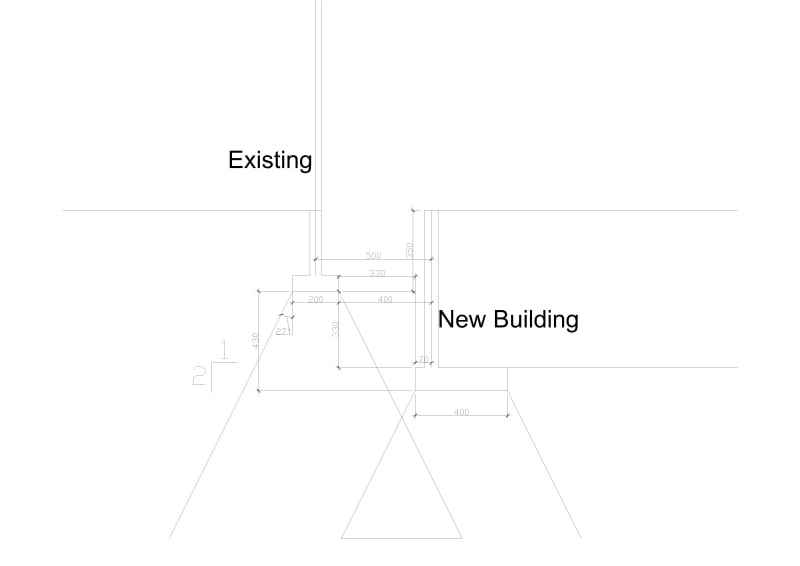We have a two basement building to be constructed near a G+7 building (total height = 24m. Due to the slope of the ground, we are to excavate 11m near this building. Initially we were going to provide shoring but we chose to remove 1 basement near the existing building (not as a whole but near the building). My boss (structural)says we need to offset our footing based on 1H:1V for rock and 2H:1v for soil in order to avoid stress overlap without rigorous calculation. But the only thing I found is 1H:2V. So my question is: -
1. Is he right (like for 6m depth I need 6m offset?)
2. Can Bousinesq's theory be used to calculate stress a required depth when the soil is influenced by a retaining wall provided (I think one of its assumption says semi infinite but Mine is discontinuous at the wall retained edge.)

1. Is he right (like for 6m depth I need 6m offset?)
2. Can Bousinesq's theory be used to calculate stress a required depth when the soil is influenced by a retaining wall provided (I think one of its assumption says semi infinite but Mine is discontinuous at the wall retained edge.)

